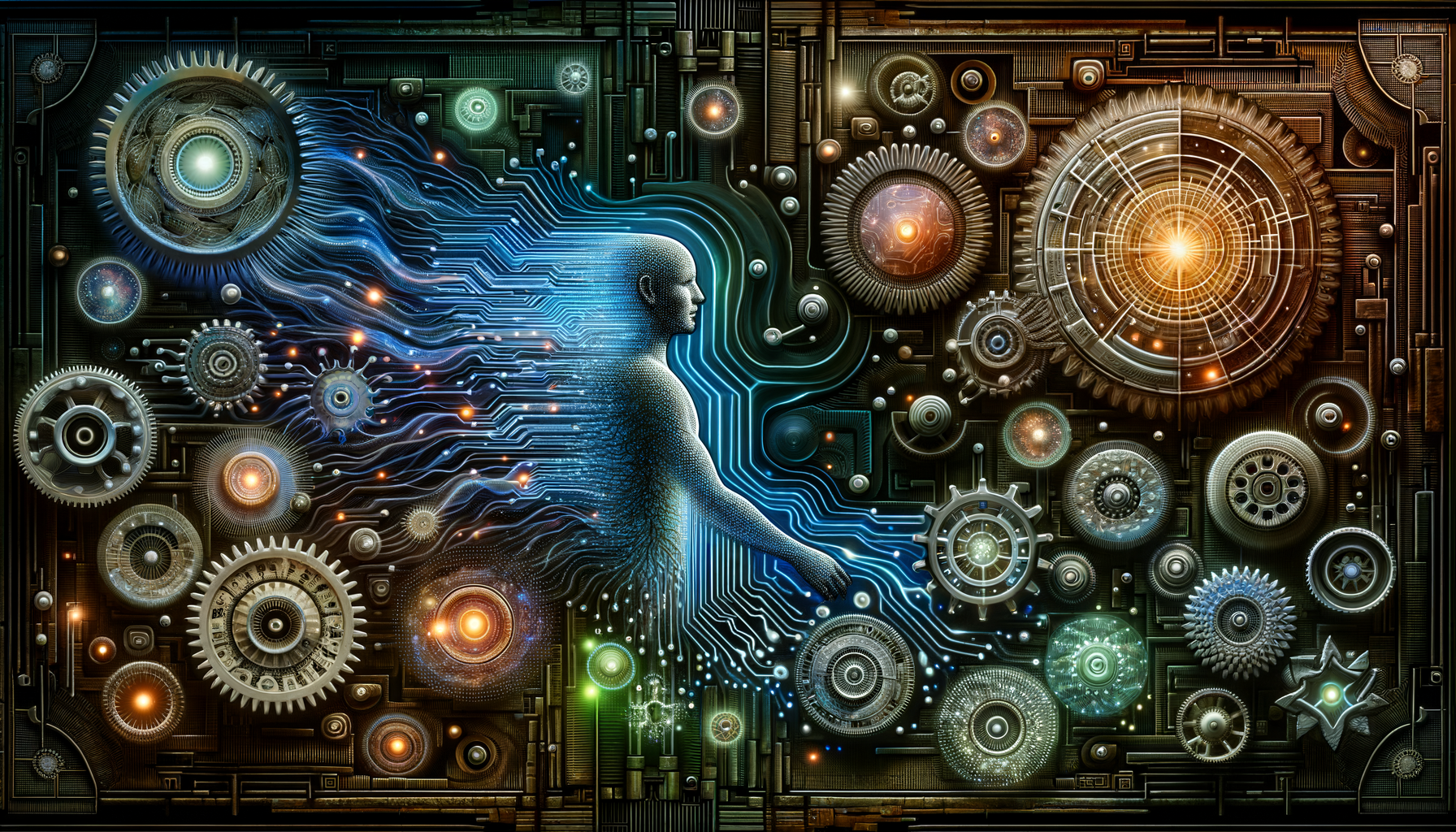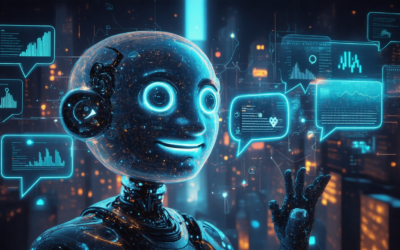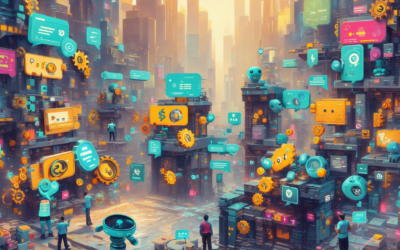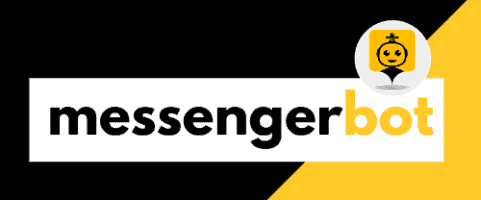In today’s digital landscape, businesses are constantly seeking innovative ways to enhance customer interactions and streamline operations. Enter the world of conversational AI chatbots, a cutting-edge technology that’s revolutionizing customer service and engagement. These intelligent virtual assistants, powered by artificial intelligence and natural language processing, offer businesses a powerful tool to provide instant, personalized support around the clock. But with the myriad of options available, from free open-source solutions to advanced enterprise-grade platforms, how do you choose the best AI chatbot for your specific needs? This comprehensive guide will walk you through the key features of conversational AI chatbots, compare them to traditional chatbots, and provide insights into selecting and implementing the ideal solution for your business. Whether you’re a small startup or a large corporation, understanding the landscape of AI-powered customer interactions is crucial for staying competitive in today’s fast-paced digital world.
Understanding Conversational AI Chatbots
Conversational AI chatbots are revolutionizing the way businesses interact with their customers. These advanced artificial intelligence bots leverage natural language processing and machine learning to engage in human-like conversations, providing seamless and efficient customer support. As a leader in the field, we at Messenger Bot have witnessed firsthand how these AI-powered chatbots are transforming customer service across industries.
What are conversational AI chatbots?
Conversational AI chatbots are sophisticated software programs designed to simulate human-like interactions through text or voice-based conversations. Unlike traditional chatbots that rely on predefined scripts, these AI-driven chatbots can understand context, interpret user intent, and provide personalized responses. By utilizing natural language processing and machine learning algorithms, conversational AI chatbots can continuously improve their performance, learning from each interaction to deliver more accurate and relevant responses over time.
At Messenger Bot, we’ve developed our conversational AI chatbot to handle complex queries, offer product recommendations, and even process transactions, all while maintaining a natural conversational flow. This level of sophistication allows businesses to provide round-the-clock support, enhancing customer satisfaction and operational efficiency.
Key features of conversational AI chatbots
The most advanced conversational AI chatbots, including those offered by Messenger Bot, come equipped with a range of powerful features:
- Natural Language Understanding (NLU): This allows the chatbot to comprehend user input, regardless of phrasing or language variations.
- Context Awareness: The ability to maintain context throughout a conversation, enabling more coherent and relevant responses.
- Multi-lingual Support: Many conversational AI chatbots can communicate in multiple languages, breaking down language barriers for global businesses.
- Integration Capabilities: These chatbots can often integrate with various platforms and systems, such as CRM software, to provide a more comprehensive service.
- Sentiment Analysis: Advanced chatbots can detect user emotions and adjust their responses accordingly, providing a more empathetic interaction.
These features collectively enable conversational AI chatbots to handle a wide array of customer service tasks, from answering frequently asked questions to guiding users through complex processes. For instance, our Messenger Bot setup process demonstrates how quickly businesses can implement these powerful tools to enhance their customer interactions.
As the demand for efficient and personalized customer service continues to grow, conversational AI chatbots are becoming an indispensable tool for businesses of all sizes. By leveraging these advanced AI chatbots, companies can provide superior customer experiences while optimizing their operational costs.
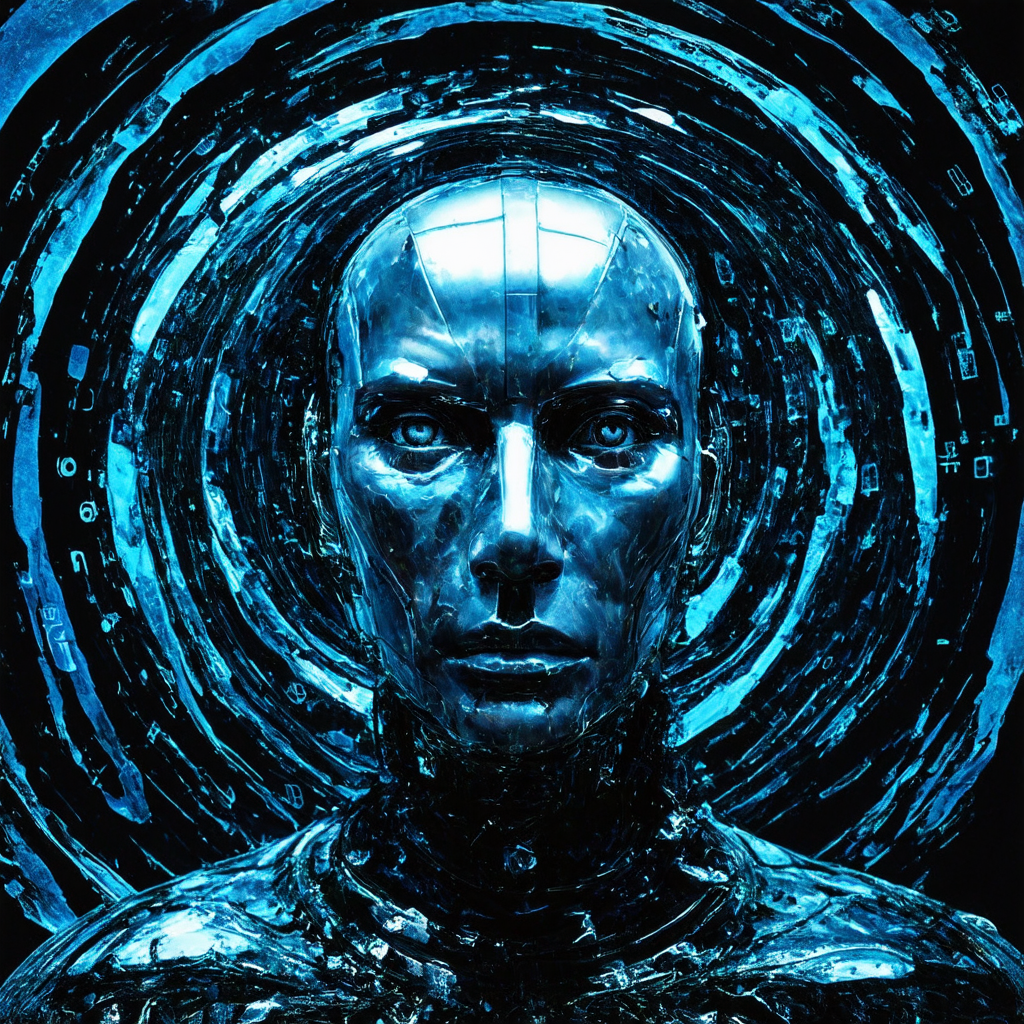
II. Comparing Chatbots and Conversational AI
When it comes to automated customer interactions, it’s crucial to understand the distinction between traditional chatbots and conversational AI. As a leading provider of AI-powered communication solutions, we’ve seen firsthand how these technologies differ and impact customer engagement.
A. What is the difference between chat bot and conversational AI?
The primary difference lies in their capabilities and level of sophistication. Traditional chatbots are rule-based systems that follow pre-programmed scripts to respond to user inputs. They’re limited to specific keywords and can only handle simple, predictable queries.
Conversational AI, on the other hand, utilizes advanced natural language processing (NLP) and machine learning algorithms to understand context, intent, and nuances in human language. This allows for more dynamic, human-like interactions that can handle complex queries and learn from each conversation.
B. Advantages of conversational AI over traditional chatbots
Conversational AI chatbots offer several significant advantages:
1. Natural Language Understanding: Unlike traditional chatbots, conversational AI can interpret and respond to a wide range of user inputs, even when they’re phrased differently or contain typos.
2. Contextual Awareness: These AI-powered systems can maintain context throughout a conversation, leading to more coherent and meaningful interactions.
3. Continuous Learning: Conversational AI improves over time by learning from each interaction, adapting to new scenarios and user preferences.
4. Multilingual Support: Advanced AI chatbots can often communicate in multiple languages, breaking down language barriers for global businesses. This feature is particularly valuable for companies looking to expand their reach internationally.
5. Personalization: By analyzing user data and past interactions, conversational AI can provide tailored responses and recommendations, enhancing the overall customer experience.
6. Handling Complex Queries: While traditional chatbots struggle with multifaceted questions, conversational AI can break down complex inquiries and provide comprehensive answers.
7. Seamless Escalation: When human intervention is needed, conversational AI can smoothly transfer the conversation to a live agent, ensuring a seamless customer experience.
These advantages make conversational AI chatbots a powerful tool for businesses looking to enhance their customer service, streamline operations, and boost engagement. As the technology continues to evolve, we can expect even more sophisticated and capable AI-driven communication solutions to emerge.
Exploring real-world examples of conversational AI in action can provide valuable insights into how these advanced chatbots are transforming customer interactions across various industries.
III. Exploring Advanced AI Chatbots
As we delve deeper into the world of conversational AI chatbots, it’s crucial to understand the advanced capabilities of modern AI-powered chat systems. These sophisticated tools are revolutionizing customer interactions and reshaping the landscape of digital communication.
A. Is ChatGPT a conversational AI?
ChatGPT, developed by OpenAI, is indeed a prime example of conversational AI. It represents a significant leap forward in natural language processing and generation. Unlike traditional chatbots, ChatGPT can engage in more nuanced and context-aware conversations, making it a powerful tool for various applications.
Key features that make ChatGPT a conversational AI include:
- Advanced language understanding and generation
- Ability to maintain context over long conversations
- Flexibility to handle a wide range of topics and queries
- Continuous learning and improvement through user interactions
While ChatGPT showcases impressive capabilities, it’s important to note that Messenger Bot offers a more specialized solution for business-oriented conversational AI needs. Our platform is designed to integrate seamlessly with various messaging channels, providing a tailored experience for customer support and engagement.
B. Conversational AI chatbot examples
The market is teeming with innovative conversational AI chatbots, each designed to cater to specific needs and industries. Here are some notable examples:
- Messenger Bot: Our AI-powered platform excels in automating customer interactions across multiple channels, including Facebook Messenger and Instagram. It’s particularly effective for businesses looking to enhance their social media engagement and support.
- IBM Watson Assistant: Known for its robust natural language processing capabilities, Watson Assistant is widely used in enterprise settings for customer service and internal support.
- Google’s Dialogflow: This versatile platform allows developers to build conversational interfaces for websites, mobile applications, and popular messaging platforms.
- Amazon Lex: Powered by the same technology as Alexa, Lex is designed for building conversational interfaces into applications using voice and text.
While these platforms offer various features, Messenger Bot’s pricing and capabilities make it an attractive option for businesses of all sizes looking to implement conversational AI chatbots.
As the field of conversational AI continues to evolve, we’re seeing increasingly sophisticated chatbots that can handle complex queries, understand context, and even detect and respond to emotions. The best AI chatbots are those that not only provide accurate information but also deliver a personalized and engaging user experience.
At Messenger Bot, we’re committed to staying at the forefront of these advancements, continuously updating our AI chatbot capabilities to ensure our clients have access to the most cutting-edge conversational AI technology.
Selecting the Ideal AI Chatbot
When it comes to choosing the best AI chatbot for your business, there are several factors to consider. As a leader in the conversational AI chatbot industry, we at Messenger Bot understand the importance of selecting a solution that aligns with your specific needs and goals.
Which is the best AI chatbot?
The “best” AI chatbot depends on your unique requirements, but some top contenders in the market include:
- Messenger Bot: Our advanced AI-powered platform offers seamless integration across multiple channels, including Facebook, Instagram, and websites. With features like multilingual support and e-commerce tools, we provide a comprehensive solution for businesses of all sizes.
- IBM Watson Assistant: Known for its robust natural language processing capabilities and enterprise-level solutions.
- Dialogflow: Google’s offering that excels in creating conversational interfaces for websites, mobile applications, and popular messaging platforms.
- Brain Pod AI: A versatile platform that offers a multilingual AI chat assistant, capable of handling complex conversations and integrating with various business systems.
While these are all strong contenders, we believe our Messenger Bot features offer unparalleled flexibility and performance for businesses looking to enhance their customer interactions.
Factors to consider when choosing an AI chatbot
To select the ideal conversational AI chatbot for your needs, consider the following factors:
- Integration capabilities: Ensure the chatbot can seamlessly integrate with your existing systems and preferred channels. Our platform, for instance, offers easy integration with just a snippet of code.
- Natural Language Processing (NLP): Look for advanced NLP capabilities that allow the chatbot to understand and respond to user queries accurately.
- Customization options: The ability to tailor the chatbot’s responses and personality to match your brand voice is crucial.
- Multilingual support: If you serve a global audience, choose a chatbot that can communicate in multiple languages. Multilingual messenger bots can significantly expand your reach.
- Analytics and reporting: Opt for a solution that provides detailed insights into chatbot performance and user interactions to help you continuously improve your strategy.
- Scalability: As your business grows, your chatbot should be able to handle increased volumes of conversations without compromising performance.
- Cost-effectiveness: Consider the pricing structure and ensure it aligns with your budget while providing the features you need. We offer competitive pricing plans to suit businesses of all sizes.
- Support and training: Look for providers that offer comprehensive support and resources to help you make the most of your chatbot. Our tutorials are designed to get you up and running quickly.
By carefully evaluating these factors, you can select an AI chatbot that not only meets your current needs but also supports your future growth. Remember, the best chatbot is one that enhances your customer interactions, streamlines your processes, and ultimately contributes to your business success.

V. Implementing Conversational AI Chatbots
Implementing conversational AI chatbots can revolutionize customer interactions and streamline business processes. As a leader in AI-driven communication solutions, we understand the importance of seamless integration and effective deployment of these advanced tools.
To successfully implement conversational AI chatbots, it’s crucial to start with a clear strategy. Define your objectives, whether it’s enhancing customer support, boosting sales, or improving user engagement. This clarity will guide your implementation process and help measure success.
One key aspect is choosing the right platform. While there are many options available, including Brain Pod AI, which offers robust AI solutions, our Messenger Bot platform provides a comprehensive suite of tools designed for easy integration and powerful performance.
When implementing your chatbot, focus on creating natural, human-like conversations. Utilize advanced natural language processing (NLP) capabilities to ensure your bot understands and responds to user queries effectively. This approach significantly enhances user experience and satisfaction.
A. Best practices for integrating AI chatbots
To maximize the benefits of your conversational AI chatbot, consider these best practices:
1. Personalization: Tailor interactions based on user data and preferences. This creates a more engaging and relevant experience for each individual.
2. Continuous Learning: Implement machine learning algorithms that allow your chatbot to improve over time. Regularly analyze conversations to identify areas for improvement.
3. Seamless Handoff: Ensure smooth transitions between the AI chatbot and human agents when necessary. This maintains a consistent user experience and addresses complex queries effectively.
4. Multi-channel Integration: Deploy your chatbot across various platforms, including social media, websites, and messaging apps. This ensures consistent support across all customer touchpoints.
5. Clear Communication: Design your chatbot to clearly identify itself as an AI assistant. This transparency builds trust with users and manages expectations.
6. Regular Updates: Keep your chatbot’s knowledge base current with the latest information about your products, services, and company policies.
B. Conversational AI chatbot Python implementation
For developers looking to implement a conversational AI chatbot using Python, there are several powerful frameworks and libraries available. Python’s versatility and extensive ecosystem make it an excellent choice for chatbot development.
One popular approach is using natural language processing libraries like NLTK or spaCy in combination with machine learning frameworks such as TensorFlow or PyTorch. These tools enable the creation of sophisticated conversational models capable of understanding and generating human-like responses.
Here’s a basic example of how you might structure a conversational AI chatbot in Python:
“`python
import nltk
from nltk.chat.util import Chat, reflections
pairs = [
[
r”hi|hello|hey”,
[“Hello!”, “Hi there!”, “Hey! How can I help you today?”]
],
[
r”what is your name?”,
[“I’m an AI assistant. You can call me ChatBot.”]
],
[
r”bye|goodbye”,
[“Goodbye!”, “It was nice talking to you. Have a great day!”]
]
]
chatbot = Chat(pairs, reflections)
def chat():
print(“Hello! I’m your AI assistant. How can I help you today?”)
while True:
user_input = input(“You: “)
if user_input.lower() == “quit”:
break
response = chatbot.respond(user_input)
print(“AI: “, response)
if __name__ == “__main__”:
chat()
“`
This example uses NLTK’s Chat utility to create a simple rule-based chatbot. For more advanced implementations, consider exploring frameworks like Rasa or Dialogflow, which offer more sophisticated conversational AI capabilities.
While building your own chatbot can be a rewarding experience, it’s important to note that platforms like Messenger Bot offer ready-to-use solutions that can save time and resources, especially for businesses looking for quick deployment and scalability.
By following these implementation strategies and best practices, you can harness the full potential of conversational AI chatbots to enhance customer interactions and drive business growth.
VI. Free and Open-Source Options
In the ever-evolving landscape of conversational AI chatbots, free and open-source alternatives have gained significant traction. These options provide businesses and developers with cost-effective solutions to implement AI-powered customer interactions without breaking the bank.
A. Conversational AI chatbot free alternatives
Several free conversational AI chatbot platforms offer robust features for businesses looking to dip their toes into AI-driven customer service:
- Rasa: An open-source machine learning framework that allows developers to build contextual AI assistants and chatbots. Rasa provides powerful natural language understanding (NLU) capabilities and is highly customizable.
- Botpress: This open-source platform offers a visual flow editor, making it easier for non-developers to create conversational experiences. It also includes built-in NLU and dialog management.
- Mycroft: An open-source voice assistant that can be integrated into various applications, including chatbots. It’s privacy-focused and can be self-hosted.
While these free options provide excellent starting points, businesses looking for more advanced features and seamless integration might consider Messenger Bot, which offers a comprehensive suite of AI-powered tools for enhanced customer engagement across multiple channels.
B. Exploring conversational-AI chatbot GitHub repositories
GitHub hosts a wealth of open-source projects related to conversational AI chatbots, offering developers valuable resources and code to build upon:
- DeepPavlov: An open-source conversational AI framework with a focus on task-oriented dialogue systems and question answering.
- ChatterBot: A machine learning, conversational dialog engine for creating chat bots in Python.
- BotKit: A toolkit for building chat bots, apps, and custom integrations for major messaging platforms.
These repositories provide a solid foundation for developers looking to create custom AI chatbots or contribute to existing open-source projects. However, for businesses seeking a more polished, ready-to-use solution, platforms like Messenger Bot offer the advantage of professional support and regular updates, ensuring your chatbot stays current with the latest AI advancements.
While exploring these free and open-source options, it’s important to consider factors such as scalability, maintenance, and integration capabilities. For businesses looking to quickly implement a robust AI-powered customer service solution, commercial platforms like Zendesk or Intercom might be worth considering alongside Messenger Bot, as they offer comprehensive features and support out of the box.
VII. The Future of AI-Powered Customer Interactions
As we look ahead, the future of AI-powered customer interactions is brimming with potential. Conversational AI chatbots are at the forefront of this revolution, reshaping how businesses engage with their customers. At Messenger Bot, we’re excited to be part of this transformation, offering cutting-edge AI chatbot solutions that are paving the way for more intelligent, efficient, and personalized customer experiences.
A. Emerging trends in conversational AI
The landscape of conversational AI is rapidly evolving, with several key trends emerging:
1. Hyper-personalization: AI chatbots are becoming increasingly adept at tailoring interactions to individual users. By leveraging advanced machine learning algorithms, these bots can analyze past interactions, preferences, and behavior patterns to deliver highly personalized responses and recommendations.
2. Emotion AI: The next generation of conversational AI chatbots will be able to recognize and respond to human emotions. This emotional intelligence will enable bots to provide more empathetic and context-appropriate responses, further blurring the line between human and AI interactions.
3. Multimodal interactions: Future AI chatbots will seamlessly integrate text, voice, and visual elements. This multimodal approach will enhance the user experience by allowing customers to interact with bots in the most natural and convenient way for them.
4. Proactive engagement: Rather than waiting for customers to initiate contact, AI chatbots will increasingly engage proactively. By analyzing user behavior and predicting needs, these bots can offer assistance or information before the customer even asks.
5. Seamless omnichannel integration: As businesses adopt a more holistic approach to customer service, AI chatbots will become the connective tissue across various communication channels. This integration will ensure consistent and continuous conversations across platforms, from social media to websites and mobile apps.
B. Top chatbot companies and providers shaping the industry
The conversational AI chatbot industry is witnessing rapid growth, with several companies leading the charge in innovation and market presence. While we at Messenger Bot are proud of our contributions to this field, it’s important to acknowledge other significant players shaping the industry:
1. IBM Watson: Known for its advanced natural language processing capabilities, IBM Watson offers robust conversational AI solutions for enterprises across various industries.
2. Google Dialogflow: This platform provides developers with tools to build conversational interfaces for websites, mobile applications, and popular messaging platforms.
3. Amazon Lex: Leveraging the same technology that powers Alexa, Amazon Lex allows businesses to create sophisticated, conversational bots.
4. Microsoft Bot Framework: This comprehensive platform enables developers to build and deploy high-quality bots for a variety of channels.
5. Messenger Bot: Our platform stands out for its user-friendly interface, advanced AI capabilities, and seamless integration with popular messaging platforms. We offer a range of features designed to enhance customer engagement and streamline business operations.
6. Drift: Specializing in conversational marketing, Drift’s chatbots help businesses convert more leads through personalized conversations.
7. MobileMonkey: This platform focuses on creating chatbots for Facebook Messenger, Instagram, and SMS, making it a popular choice for social media marketing.
8. ManyChat: Known for its easy-to-use visual bot builder, ManyChat is favored by small businesses and marketers for creating engagement-driven chatbots.
9. Brain Pod AI: This platform offers a suite of AI-powered tools, including a versatile chatbot solution that can be customized for various business needs.
10. Intercom: Combining live chat, chatbots, and a knowledge base, Intercom provides a comprehensive customer communication platform.
As the industry continues to evolve, these companies, along with emerging startups, are driving innovation in conversational AI technology. At Messenger Bot, we’re committed to staying at the forefront of these developments, continuously enhancing our AI-powered customer service bots to provide the best possible solutions for businesses of all sizes.
The future of AI-powered customer interactions is bright, with conversational AI chatbots playing a central role in shaping how businesses connect with their customers. As we continue to innovate and refine our offerings, we’re excited to be part of this transformative journey, helping businesses leverage the power of AI to create more meaningful, efficient, and personalized customer experiences.

